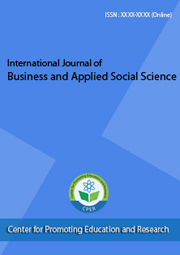Journal Menu
current
VOLUME: 4; ISSUE: 10; OCTOBER: 2018
Table of Contents
Articles
Author(s): Larissa J. Adamiec, Deborah Cernuaskas, Jodi Houlihan, Todd Kelsey
Full Text
1296 1015
1296 1015
Abstract:
Currency prices in Latin America have proven over time to be unstable. Influences on currency prices include macroeconomic factors such as global growth, inflation, global confidence, etc. Microeconomic factors impacting currency prices include commodity prices, economic growth, unemployment, housing prices, etc. The lack of stability of the countries in Latin America makes these countries vulnerable to changes in exchange rates and currency prices due to headline news items. Investors seek countries in Latin America for their high interest rates and high volatility to generate higher returns. As a result, the currency will often experience heighten changes in price levels.We evaluate headline news from three countries within Latin America; Brazil, Colombia and Mexico. Headlines were taken from Bloomberg world news from 1999 to 2011. Headlines were then identified and coded into several categories including; global outlook, peso falls, commentary, DTF index, sell dollars, stocks fall, spending reserves, index falls, index rises, buy debt, inflation, IMF, auction, bond rise and banks profit. Additionally, the news item was associated with whether the currency price was at a local high or a local low in terms of price. After a local high the value of the currency would experience a drop or a decline in value. Conversely, after a local low, the value of the currency would experience an increase in value.
Four headlines were evaluated to determine a relationship between the headline and the market reaction to the news. The headlines evaluated were; peso drops, sell debt, peso rises and commentary. Each country went through various periods in which headline news contributed to volatility and variability of the currency price. Time periods were then evaluated to see if the returns of the carry trade differed. We found that time periods without a specific types of news differed to time periods with the specific types of news.






